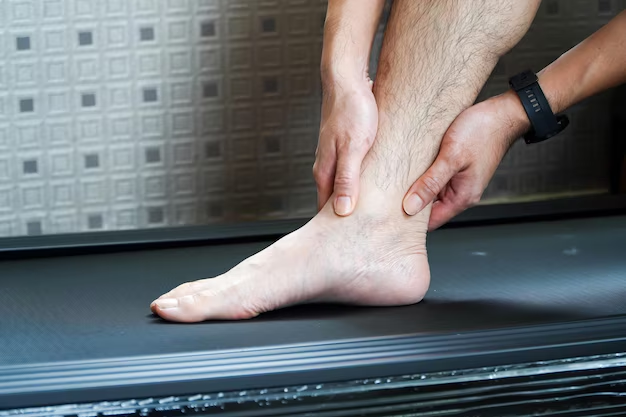Understanding Foot Gout: What Triggers This Painful Condition?
Imagine waking up with intense pain in your foot, so much so that even the weight of a bedsheet becomes unbearable. This is a common scenario for those suffering from foot gout, a form of arthritis that can disrupt daily life. In this article, we'll explore what causes foot gout, diving into its triggers, risk factors, and offering guidance on how to manage symptoms effectively.
What is Gout and Why Does it Affect the Feet?
Foot gout, simply referred to as gout in medical contexts, arises from the accumulation of urate crystals in the joints, causing inflammation and severe pain. Typically, it targets the joint at the base of the big toe, making it a challenging and painful issue for those afflicted. But why does this happen?
The Role of Uric Acid
Uric acid, a byproduct of the breakdown of purines found in certain foods, plays a pivotal role in causing gout. Under normal circumstances, uric acid dissolves in the blood, passing harmlessly through the kidneys and exiting the body in urine. However, when the body produces excessive uric acid or excretes too little, it builds up, forming sharp, needle-like crystals in a joint or surrounding tissue.
Factors Contributing to High Uric Acid Levels
Several factors can lead to increased uric acid, elevating the risk of developing gout:
Dietary Choices
Consuming a diet rich in purines can lead to elevated uric acid levels. Foods and beverages that are particularly high in purines include:
- Red meat and organ meats
- Certain seafood such as sardines and shellfish
- Alcoholic beverages, particularly beer
- Sugary drinks and foods high in fructose
Obesity and Weight
Excess weight can increase the body's production of uric acid. Moreover, it can force the kidneys to work harder to eliminate uric acid, increasing the risk of gout.
Medical Conditions
Certain health conditions such as hypertension, diabetes, metabolic syndrome, and heart diseases can escalate uric acid levels. Kidney dysfunction, in particular, affects the body's ability to filter and excrete uric acid effectively.
Medications
Some medications, like diuretics often prescribed for high blood pressure, can raise uric acid levels. Likewise, low-dose aspirin and medications for suppressed immune systems may contribute to a spike in uric acid levels.
Recognizing the Symptoms of Foot Gout
Understanding the symptoms is crucial for identifying and managing gout effectively.
Typical Signs to Watch For
- Intense Joint Pain: A sudden onset of pain, typically in the big toe, but it can affect other joints.
- Inflammation and Redness: Swelling accompanied by a warm sensation around the affected area.
- Limited Range of Motion: Reduced ability to move the affected joint smoothly.
It's essential to recognize these symptoms early to take the necessary steps to manage and mitigate further joint damage.
Managing and Preventing Foot Gout
While gout can be particularly painful, several lifestyle adjustments can help manage symptoms and reduce flare-ups.
Dietary Adjustments
Adopting a gout-friendly diet plays a significant role in managing the condition:
- Limit Purine-Rich Foods: Reduce or eliminate consumption of foods known for their high purine content.
- Stay Hydrated: Aim for at least 8 cups of water daily to help flush uric acid through the kidneys.
- Moderate Alcohol Intake: Especially limit or avoid beer and other alcoholic beverages known to raise uric acid levels.
- Include Low-fat Dairy: It may lower uric acid production and forms a part of a balanced diet.
Achieving and Maintaining a Healthy Weight
Weight loss in obese individuals significantly decreases the risk of gout attacks by lowering uric acid levels and reducing stress on joints.
Monitor Medications
Consulting with healthcare professionals about current medications can help identify if they contribute to elevated uric acid levels. Alternative treatments may be available that carry less risk.
The Psychological Impact of Gout
Living with gout can also take a toll on mental health. Chronic pain and limited mobility can lead to frustrations and stress, exacerbating the condition.
Coping Strategies
- Stay Informed and Connected: Engaging with support groups or seeking therapy can help deal with the emotional aspects of living with a chronic condition.
- Stress Management Techniques: Incorporating practices like yoga, meditation, or deep breathing can help manage stress effectively.
Navigating Gout Flare-ups
Gout flare-ups can be managed by understanding potential triggers and employing effective coping strategies.
Immediate Steps During a Flare-up
- Rest the Affected Joint: Avoid putting pressure on the painful area.
- Apply Ice: Use an ice pack to reduce swelling and soothe the pain.
- Keep the Joint Elevated: Elevation can help reduce inflammation.
Long-term Prevention
Regular check-ups with healthcare providers can help keep uric acid levels in check, preventing future attacks. Discussing periodic blood tests or medication adjustments might be beneficial.
Living Well with Gout
While gout can be a chronic concern, understanding its causes and taking preventive measures can significantly improve quality of life.
Emphasizing lifestyle modifications, acknowledging potential triggers, and maintaining a dialogue with healthcare providers ensures that life with foot gout can be well-managed, diminishing its impact.
Summary Table: Key Takeaways for Managing Gout 🦶
| Action Items | Tips & Tricks |
|---|---|
| Dietary Changes | 🍗 Limit purine-rich foods like red meat and seafood. |
| Hydration | 💧 Drink plenty of water to help flush uric acid. |
| Weight Management | 🏋️♂️ Aim for a healthy weight to reduce joint stress. |
| Monitor Medications | 💊 Consult your physician about potential medication impacts. |
| Address Flare-ups | ❄️ Rest, ice, and elevate the joint during an attack. |
| Mental Health | 🧘🏽♀️ Engage in stress-reducing activities for overall wellness. |
By adopting these strategies, individuals with gout can lead a more comfortable and productive life. Understanding the root causes and maintaining ongoing management are crucial steps toward ensuring that foot gout remains a condition that can be controlled rather than one that controls you.
